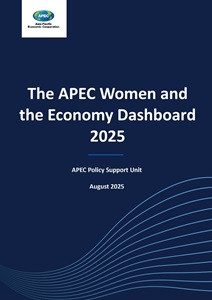
Proceedings
APEC Workshop on Promoting Decarbonization of Power Sector by Using Carbon-Free Energy (CFE)
The Asia-Pacific Economic Cooperation (APEC) is a regional economic forum established in 1989 to leverage the growing interdependence of the Asia-Pacific.
The Asia-Pacific Economic Cooperation (APEC) is a regional economic forum established in 1989 to leverage the growing interdependence of the Asia-Pacific.
APEC ensures that goods, services, investment and people move easily across borders. Members facilitate this trade through faster customs procedures at borders; more favorable business climates behind the border; and aligning regulations and standards across the region.
APEC ensures that goods, services, investment and people move easily across borders. Members facilitate this trade through faster customs procedures at borders; more favorable business climates behind the border; and aligning regulations and standards across the region.
APEC works to help all residents of the Asia-Pacific participate in the growing economy.
APEC works to help all residents of the Asia-Pacific participate in the growing economy.
Capacity building projects play an important role in helping translate APEC's goals into reality.
Capacity building projects play an important role in helping translate APEC's goals into reality.

Reports
•August 2025
Download Report
3MB
Published Under
APEC Secretariat, APEC Policy Support Unit
Accessed
788
Pages
160
The APEC Women and the Economy Dashboard 2025 marks a decade since it was first launched to monitor progress on women’s economic empowerment across APEC economies. Drawing on 15 years of data, the report reveals uneven gains and persistent barriers. Despite improvements in financial inclusion, digital access, and general education, gender inequality remains systemic, with entrenched barriers in employment, wages, leadership, safety, and legal protections. The report calls for urgent, coordinated action in line with the La Serena Roadmap for Women and Inclusive Growth, including legislative reforms, stronger leadership pipelines, investments in care, and better access to training and digital opportunities. A key recommendation is the systematic collection and use of sex-disaggregated data to guide policy and close gender gaps.

